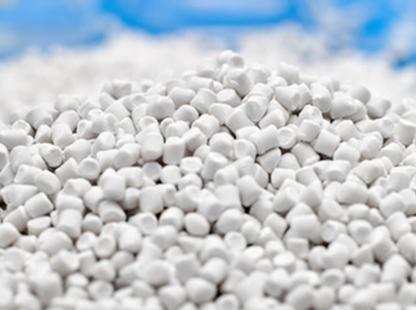
07. Microscale Laboratory
2025 topic: Bioplastic Fillers: The Calcium Challenge
Coordinators: Dr. Bhavani Balasubramanian
The maximum number of students per team for Microscale Event 7 is three.
Important: All documents and files for your experiment must be submitted by April 18th, 2025!
Background:
Relevance to the theme of the NJCO 2025 event:
Bioplastic is a biodegradable type of plastic that is an environmentally safer alternative to fossil fuel-based plastics. The constituent compounds of bioplastic typically come from plants that contain starch, cellulose, and lignin. Cassava starch is a good choice because it has a starch content of close to 90%, and it has the potential to create good-quality bioplastic.
However, a filler is needed when making bioplastics to increase stiffness, strength, and reduce solubility in water. Calcium salts, like calcium carbonate are added to increase the stiffness, heat resistance and strength of the bioplastic. The advantages are that calcium is readily available in nature in the form of calcium carbonate in rocks, in egg shells, or bones of decayed animals and is odorless, tasteless, biodegradable, and very inexpensive.
OBJECTIVE
Determine the calcium content of a calcium supplement using microscale techniques.
Materials Provided by NJIT on the Day of the Event
Calcium supplement
Materials and Methods Brought by Team to the Competition
Bring whatever you need to experiment with, but you must use microscale techniques. Make sure you have enough deionized water.
Burets may not be used as they are not used in microscale procedures.
Prior to starting, each team must provide the judges with a typed step-by-step description of the methods they intend to use to address the objective of this experiment.
INSTRUCTOR NOTES ON SPECIAL SAFETY CONSIDERATIONS
At all times, the instructor or coach should be in charge of the laboratory.
Review all procedures for safety concerns.
Teams won't be able to conduct their experiments unless the judges approve of their procedure in accordance with safety guidelines.
The Safety protocol must be addressed in the team's procedure submitted for evaluation prior to the event.
Teams must practice procedures prior to the event. Judges reserve the right to dismiss unprepared teams on the day of the event.
Prior to the event:
The students should review the 12 principles of “Green Chemistry” developed by Paul Anastas and John Warner and illustrate how their procedure adheres to these principles.
A step-by-step description of the methods and safety protocol must be submitted by the due date!
You must practice your procedure. Judges may disqualify entrants who are not confident about their procedure and, as a result, pose a safety risk. Review, be familiar with, and be prepared to follow all safety guidelines associated with your chosen method.
Research appropriate small-scale techniques or microscale techniques. Lab manuals are available from various scientific suppliers, including Flinn Scientific, Inc. Furthermore, publications such as the Journal of Chemical Education may serve as sources for specific microscale techniques.
On the Day of the Event:
Follow your team's laboratory procedure to collect and record data for at least three trials.
Complete appropriate calculations first to determine the percentage of calcium in the calcium supplement (DATA MUST BE REPORTED AS % OF CALCIUM)
Clean up and then submit your report, showing all calculations on the back of the report page.
Time Limit: 75 minutes
Judging Criteria
Description of methods, including “green” approach (30%)
Description of safety concerns addressed within the procedure, 15%
Presentation of Data and Calculations, 30%
Accuracy of the calculations: 25%
Time (tiebreaker)
Notes
Events 5, 6, 7, and 8 require two teams from the same school to compete in the same time slot unless the NJCO Director gives his or her approval. The requested times will be adjusted for this!
In the event of a tie, the team that completes this session in the shortest period of time will win the tie.
Teams must clean up and remove all materials that they bring to this event and return them to their own schools.
Team Identification
Each submission (research reports, website links, lab reports, etc.) must include the following 4 items:
Name of school
Team A or B designation, if applicable
Names of students (printed legibly)
Name of coach
ALL PARTICIPANTS MUST BRING (APPROVED) GOGGLES, GLOVES, AND APRON OR LAB COAT AND USE THEM AT ALL TIMES DURING THE COMPETITION. STUDENTS MUST ADHERE TO BOTH GENERAL LAB SAFETY PROTOCOLS AND THOSE SPECIFIC TO THEIR CHOSEN PROCEDURE.